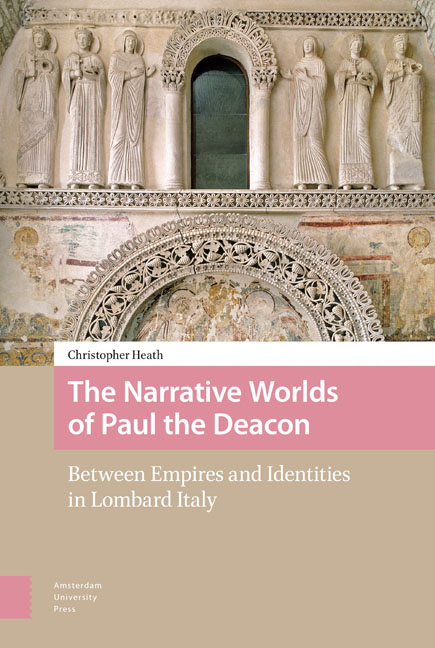Book contents
- Frontmatter
- Dedication
- Contents
- List of Tables and Diagrams
- Acknowledgements
- List of Abbreviations
- Introduction
- 1 Vir valde Peritus: Paul the Deacon and his Contexts
- 2 The Early Narratives
- 3 The Historia Langobardorum: The Structure of Paul’s World
- 4 The Historia Langobardorum: The Six Books in Detail
- 5 Conclusion
- Bibliography
- Index
4 - The Historia Langobardorum: The Six Books in Detail
Published online by Cambridge University Press: 10 December 2020
- Frontmatter
- Dedication
- Contents
- List of Tables and Diagrams
- Acknowledgements
- List of Abbreviations
- Introduction
- 1 Vir valde Peritus: Paul the Deacon and his Contexts
- 2 The Early Narratives
- 3 The Historia Langobardorum: The Structure of Paul’s World
- 4 The Historia Langobardorum: The Six Books in Detail
- 5 Conclusion
- Bibliography
- Index
Summary
This chapter has two principal aims. First, it analyses the structure of each of the books in detail; secondly, it discusses what Paul did put in his work and why. The analysis will focus on the context and construction of the narrative framework. Thus it will be important to pinpoint at each stage, so far as possible, his sources, which will allow an interrogation of his responses and narrative strategy in the composition of the work.
Book I ‘The Men of Old Tell a Silly Story’: Legends and Amazons
According to [Gaius/Publius] (Cornelius) Tacitus (56 CE-117 CE) (whom Paul did not use), the Langobardi were illustrious by lack of numbers. ‘They were’, he wrote, ‘set in the midst of numberless and powerful tribes’ and were ‘delivered not by submissiveness but by peril and pitched battle’. This small and inauspicious picture is echoed by the brief notices of both (Marcus/Gaius) Velleius Paterculus (c.19 BCE-c.31 CE), and Cassius Dio, and later by the first book of the Historia Langobardorum. The Winnili, who subsequently become the Langobardi of this first book, embark upon an uncertain and remarkable journey. This journey is an unlikely testament to the survival and success of a relatively small West Germanic tribe whose wanderings take them from the banks of the Elbe to the borders of Italy where, as Paul indicates in his very first chapter, they ‘ruled prosperously’ (feliciter regnavit). Paul's strategy to negotiate the joint challenge of limited and laconic sources and a traditional origin story firmly tied to a pagan past involved an extensive range of source use, notably Classical materials to soften the pagan elements in the material. The first book is composed of 27 chapters. It is, as we have seen, the shortest in these terms of the six books. This belies its length in terms of both word count (it is the fourth longest) and to its density of treatment. Even though it is not until Chapter 19 that the narrative begins to match a recognisable historical time, the density of treatment (i.e. years to chapters) is still 3.37 years per chapter. It remains the most concise in terms of chronology and with 21 of the chapters having 29 lines or less, it is also short in terms of chapter length.
- Type
- Chapter
- Information
- The Narrative Worlds of Paul the DeaconBetween Empires and Identities in Lombard ItalyPublisher: Amsterdam University PressPrint publication year: 2017

